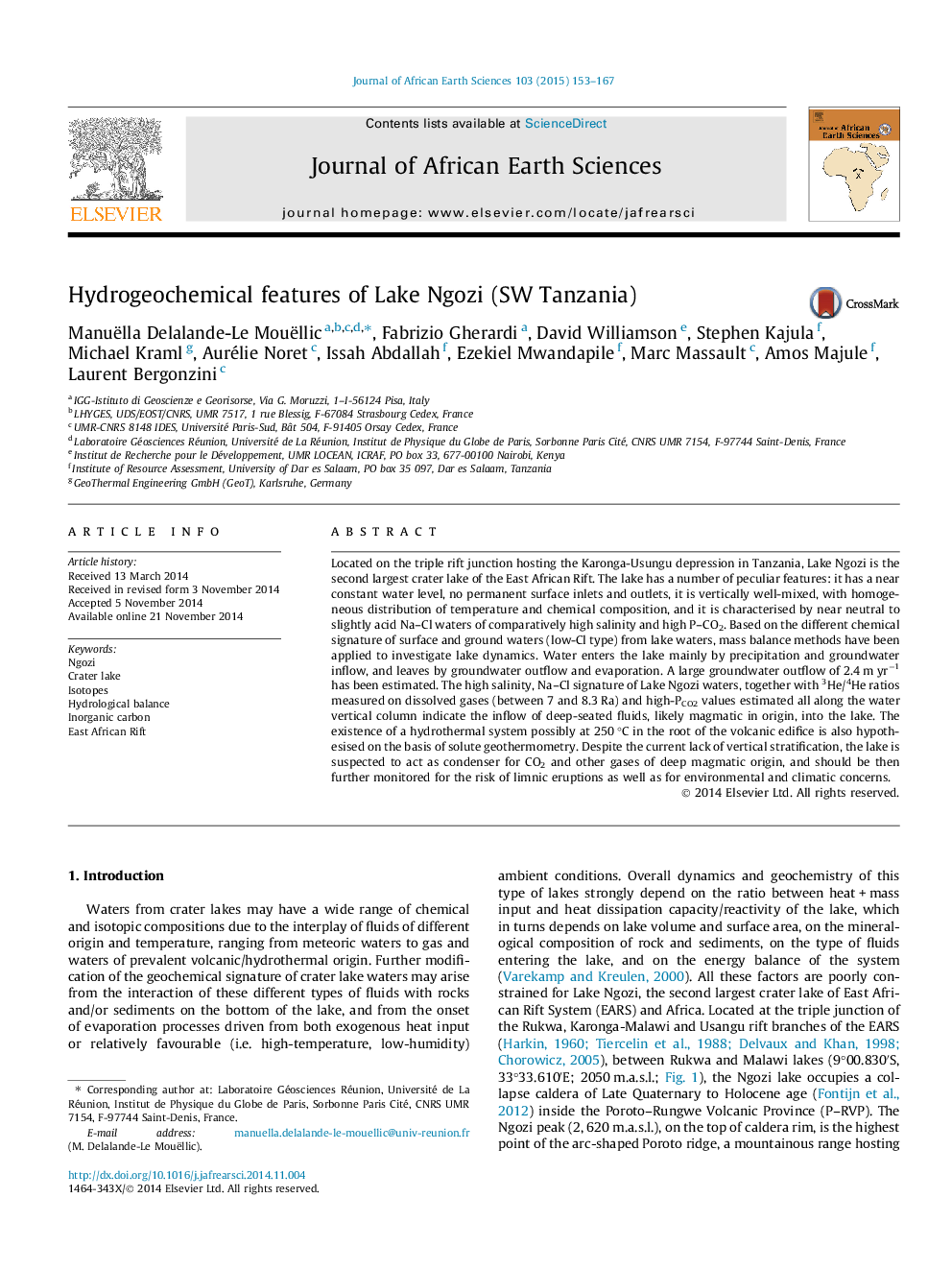| کد مقاله | کد نشریه | سال انتشار | مقاله انگلیسی | نسخه تمام متن |
|---|---|---|---|---|
| 4728704 | 1640204 | 2015 | 15 صفحه PDF | دانلود رایگان |

• We show unprecedented data on the chemical and isotopic composition of waters from Lake Ngozi and its hydrological network.
• These data give evidence of an unusually weakly stratified and high-PCO2 lake.
• We modelled first hydrological budget of Lake Ngozi.
• We discussed the origin of lake salinity and more specifically the origin of high chloride concentrations of Lake Ngozi.
Located on the triple rift junction hosting the Karonga-Usungu depression in Tanzania, Lake Ngozi is the second largest crater lake of the East African Rift. The lake has a number of peculiar features: it has a near constant water level, no permanent surface inlets and outlets, it is vertically well-mixed, with homogeneous distribution of temperature and chemical composition, and it is characterised by near neutral to slightly acid Na–Cl waters of comparatively high salinity and high P–CO2. Based on the different chemical signature of surface and ground waters (low-Cl type) from lake waters, mass balance methods have been applied to investigate lake dynamics. Water enters the lake mainly by precipitation and groundwater inflow, and leaves by groundwater outflow and evaporation. A large groundwater outflow of 2.4 m yr−1 has been estimated. The high salinity, Na–Cl signature of Lake Ngozi waters, together with 3He/4He ratios measured on dissolved gases (between 7 and 8.3 Ra) and high-PCO2 values estimated all along the water vertical column indicate the inflow of deep-seated fluids, likely magmatic in origin, into the lake. The existence of a hydrothermal system possibly at 250 °C in the root of the volcanic edifice is also hypothesised on the basis of solute geothermometry. Despite the current lack of vertical stratification, the lake is suspected to act as condenser for CO2 and other gases of deep magmatic origin, and should be then further monitored for the risk of limnic eruptions as well as for environmental and climatic concerns.
Journal: Journal of African Earth Sciences - Volume 103, March 2015, Pages 153–167